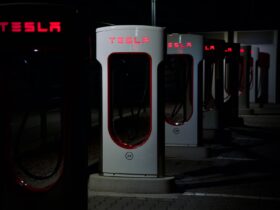Electric cars are becoming increasingly popular as people look for more sustainable transportation options. While there are many benefits to owning an electric car, some people may be hesitant to make the switch because they don’t understand how the charging system works. This article will explain how an electric car’s charging system works, so that you can make an informed decision about whether or not an electric car is right for you.
The basics: how an electric car’s charging system works
Electric cars are becoming increasingly popular as people look for ways to reduce their carbon footprint. While electric cars have many benefits, they can be expensive to maintain and operate. One of the biggest expenses associated with electric cars is the cost of charging their batteries.
The cost of charging an electric car battery can vary depending on the type of charger, the size of the battery, and the electricity rates in your area. Most home chargers will cost between $200 and $600 to install, and the average cost to charge an electric car is about $0.15 per kilowatt-hour (kWh).
If you’re considering an electric car, it’s important to understand how the charging system works. Electric car batteries must be plugged into an external power source in order to recharge.
The different types of charging stations
As the number of electric vehicles (EV) on the road continues to grow, there is an increasing demand for reliable and accessible charging stations. While many public and private parking facilities offer Level 1 or Level 2 charging stations, some homeowners are installing Level 2 or Level 3 EVSE (electric vehicle supply equipment) in their homes.
There are three main types of EVSE: Level 1, Level 2, and Level 3. Each level corresponds to a different voltage and amperage and can charge an EV at different speeds.
Level 1 EVSE uses a 120-volt outlet and can charge an EV battery in 8-10 hours. This type of charger is often used in public parking areas where there is no dedicated 220-volt circuit. Many newer EVs come with a 120-volt cord that can be used to plug into a standard outlet. Level 2 EVSE uses a 220-volt circuit and requires an electrician to install the appropriate wiring. Level 2 chargers are capable of charging an EV battery in 4-6 hours. Level 3 EVSE uses a 480-volt circuit, which can charge an EV battery in 30 minutes or less. We recommend Level 2 chargers for home charging. If you are installing a new charger at your business, we recommend Level 3 chargers.
Installation guide for EV charging system in your home
Many people are interested in installing an EV charging system in their home. However, the process can seem daunting. This installation guide will walk you through the steps necessary to install an EV charging system in your home, so that you can start charging your electric vehicle with ease.
The first step is to consult with your local utility company. They will be able to help you determine the best location for your charger and make sure that your home’s electrical system is compatible with the charger. Once you have a location and permission from your utility company, you can begin installing the charger.
Most home chargers come with everything you need for installation, including detailed instructions. However, it is always a good idea to hire a professional electrician to handle the actual installation. Once the charger is up and running, you can charge your vehicle overnight. This will keep your home warm in the winter and cool in the summer. If you have a Level 2 charger, it will take about 8-12 hours to fully charge your vehicle.


The role of the battery in an electric car
Electric cars are powered by batteries, and the type of battery you choose will have a big impact on how far your car can go on a single charge. There are three main types of batteries used in electric vehicles: lead-acid, nickel-metal hydride, and lithium-ion.
Lead-acid batteries are the least expensive and heaviest of the three types, but they also have the shortest range. Nickel-metal hydride batteries are more expensive than lead-acid batteries, but they’re also lighter and have a longer range. Lithium-ion batteries are the most expensive type of battery, but they’re also the lightest and have the longest range.
If you’re looking to install an EV charging system in your home, you’ll need to decide which type of battery you want to use.
How to properly charge an electric car
Electric cars are becoming increasingly popular as the technology improves and the cost of ownership decreases. However, charging an electric car can be confusing for first-time owners. This article will explain how to properly charge an electric car, including installing a home charging system.
Charging an electric car is different than refueling a gasoline car. Electric cars must be plugged into an external power source to charge the battery. The amount of time it takes to charge an electric car depends on the size of the battery and the power of the charger. A typical home charger is about 10 times slower than a public fast charger, so it will take several hours to fully charge an electric car at home.
Most electric cars come with a Level 1 charger, which plugs into a standard 120-volt outlet. Level 2 chargers are also available and can be installed in your home.
Conclusion: electric cars are the future
As the world progresses, so does the technology we use to get around. Electric cars are becoming more and more popular, as they are much better for the environment than traditional gas cars. If you’re thinking of making the switch to an electric car, here’s what you need to know about installing an EV charging system in your home.






